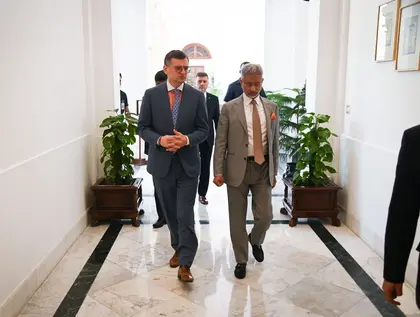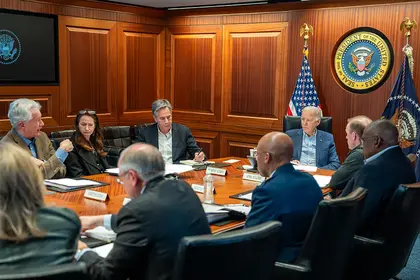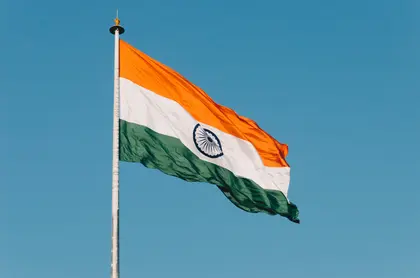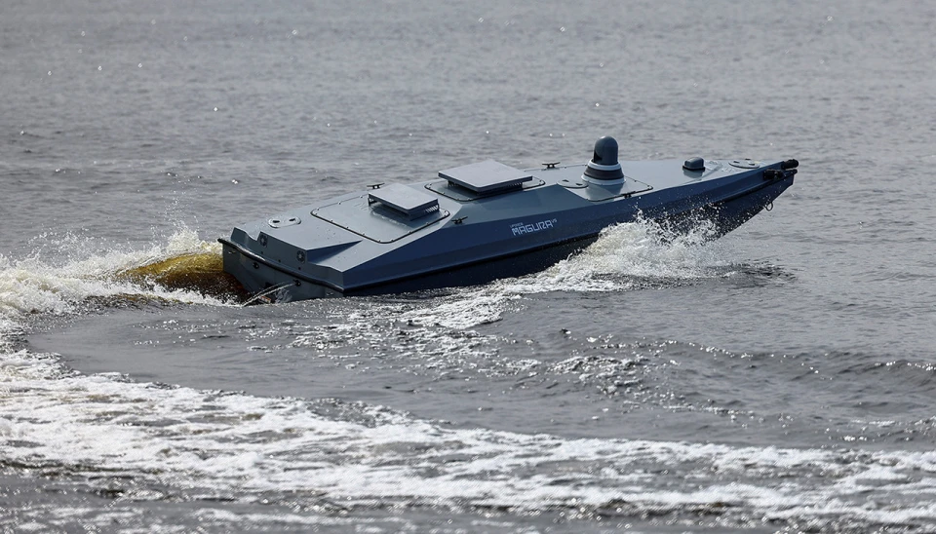Elections have been underway since April in India, the world’s biggest democracy.
Results will be announced on June 1 as to who will be its next Prime Minister and Members of Parliament. Nearly one in five human beings reside on this gigantic subcontinent, and India’s 968 million eligible voters have been casting ballots at one million polling stations set up in parks, kiosks, buildings, and shipping containers. Line-ups are miles long and the turnout is impressive.
JOIN US ON TELEGRAM!
Follow our coverage of the war on the @Kyivpost_official.
Expected to win re-election for the third time is India’s diminutive Prime Minister Nahendra Modi, a career politician from humble beginnings who has governed since 2014 and helped guide India’s modernization and economic growth. By 2022, India had overtaken its colonial “master”, Britain, in economic size, and is expected to surpass Germany and Japan in three years, becoming the world’s third-largest economy after China and America.
If current growth rates continue, India will be second in size to the United States by 2050. India skyrockets toward superpower status.
But the giant nation faces headwinds and Dev Patel, the British-Indian superstar of “Slumdog Millionaire”, just released a powerful movie called “Monkey Man” that deals with its corruption, poverty, crime, caste system, and religious discrimination. India has banned the movie during the election, but pirated versions are widely distributed.

Ukraine FM Wraps Up Visit to India, Traditionally a Russian Ally
The film — which I saw and thought was courageous — won’t affect the outcome of the vote, but places Patel at the forefront of the demand for more social justice. “I wanted to create a story about the underdogs challenging the untouchable status quo,” he said in an interview.
The story is metaphorical and an action film. Patel plays a prize fighter, whose mother was killed by corrupt officials when he was a boy, and who undergoes a spiritual transformation. He then becomes an “avenging angel” and violently takes on India’s underworld, gangsters, dens of iniquity, and eventually a dangerous political leader.
Tragically, many Indian females remain trapped in an ancient dowry system and denied equal access to education in rural areas. There is also religious tension. Modi’s party is fiercely Hindu and has imposed curbs on speech and trimmed rights for the 14 percent of the population who are Muslims.
But the country has improved living standards for all its citizens and made miraculous strides toward eliminating poverty. Modi has adopted a “gender parity” platform, essential to continuing India’s economic momentum. Female literacy has improved and incomes have risen.
What transformed India was that in 2009 New Delhi rolled out a technology that underpins its economic miracle. A biometric card, issued to everyone at birth, allows Indians of all ages access to its economy and social safety net. Fingerprints, photos, and data are embedded in these cards that serve as a passport, driver’s license, food voucher, school pass, health card, bank card, credit card, or rail pass.
The card provides opportunities, harnesses enterprise, transforms government, and pays enormous dividends to the country, according to billionaire entrepreneur Anand Mahindra. “This ID allows direct transfers to the poorest without corruption in between.”
This socio-economic advance, attached to a welfare state, has bootstrapped a generation of Indians. Now the country outperforms other impoverished countries. “According to the latest data from the World Poverty Clock, India has successfully reduced the proportion of its population living in “extreme poverty” to below 3 percent. (The World Bank defines a person as extremely poor if she is living on less than 1.90 international dollars a day.) “India no longer is home to largest number of people living in extreme poverty and has been taken over by Nigeria.
At the end of May 2018, Nigeria had about 87 million people in extreme poverty, compared with India’s 73 million. About 44 Indians come out of extreme poverty every minute, one of the fastest rates of poverty reduction in the world.”
Another major factor in its ascendancy is Modi’s diplomatic moxie which has attracted enormous trade opportunities as well as foreign direct investment. The country punches way above its weight and now has influence that exceeds China’s or Russia’s and other rising economies. It is wooed constantly by trade missions, and has forged many alliances.
In 2007, New Delhi co-founded the “Quad” (Quadrilateral Security Dialogue) with Japan, Australia, and the US in order to keep an eye on China. The four nations stage military exercises and share intelligence and the Quad now includes New Zealand, South Korea, Vietnam, and other Asian nations like the Philippines and Singapore as observers.
In 2009, BRIC was formed, an acronym representing the four rising economic powers at the time of Brazil, Russia, India, China then eventually South Africa. The original aim, established before Putin went on his rampage and the China-India border clash worsened, was to establish an equitable, democratic, and multi-polar world order. Obviously, the organization is somewhat defunct, but India retains good relationships with all partners.
India also joined a new grouping dubbed I2U2, or the “West Asian Quad”, that includes India, Israel, the United States, and United Arab Emirates. This assemblage monitors Middle East and Afghanistan affairs.
But most significantly, Washington and Brussels have placed India at the center of their need to diversify trade away from China and other adversaries. India is an established global giant in pharmaceutical manufacturing, but, with Western investments, intends to overtake China’s pre-eminence in production of semiconductors, solar panels, automobile components, medical devices, telecoms equipment, and electric vehicles.
India’s competitive advantages over China are: A population that speaks English, world-class science and IT sectors, and a massive population (and consumer market) that represents an enormous business opportunity for multinational manufacturers who invest there. Not surprisingly, the United States is now India’s biggest trading partner.
The bond between the US and India is the world’s most consequential relationship in the 21st century. America has encouraged and helped India become a leading global power and watchdog in that part of the world.
India is not only a bulwark in Asia against China, but has helped develop and protect the Indo-Pacific region. India is also an inspiration to fledgling democracies, and former colonies, around the world and will replace China as the world’s factory.
The two Asian superpowers still clash over borders, but India ascends while President Xi Jinping has lost prestige and trade due to his participation in Putin’s so-called “no limits friendship” and slaughter of innocents in Ukraine and elsewhere.
However, India’s sizeable oil and weapons trade with Russia has upset American and European politicians. But this is changing due to pressure, US sanctions, and concerns by Indians themselves about Russia’s closeness to their arch rival China. India now buys more oil from the US and Middle East, and is drastically reducing dependence on Russia for armaments and inviting Western suppliers to fill the gap. It has a large military and is the world’s biggest importer of weapons.
Diplomatically, Modi has choreographed a delicate dance since Russia’s invasion. In 2022, he called for a cease-fire in Ukraine, condemned Russian threats of nuclear attack, and said to Putin personally “now is not the time for war”, that he should “move onto a path of peace”, and that “democracy, diplomacy and dialogue” are of paramount importance.
India also provides humanitarian aid to Kyiv, but Modi’s internal political opponents are unimpressed by his Russian relationship. “The actions that India is engaged in so far do not reflect any remorse or even mild criticism of the events in Ukraine,” said Praveen Chakravarty, a political economist affiliated with the opposition Indian National Congress party. “If anything, it seems to aid and abet.”
Diplomatic dancing aside, India has picked the winning side. With 1.4 billion people to feed and protect – and China a traditional enemy and still tethered to the despicable Putin regime in Moscow -- India is now securely in the Euro-American camp. It was one of the first nations to recognize a newly independent Ukraine in 1991, and its increasing economic success represents a global benefit too. It holds China at bay, is a working democracy, and now a geopolitical and military power.
It works to protect its environment and is the world’s second biggest contributor to UN peacekeeping operations around in the world, in keeping with Gandhi’s anti-war principles. Most importantly, the country has eliminated poverty faster than any other in history, removing 400 million from near-starvation in one generation.
While imperfect, Indian society is essentially human-centric and values empathy, compassion, and non-violence. If enshrined, and improved, India will offer the world an example of a value system that is sustainable, just, and prosperous.
Reprinted from [email protected] – Diane Francis on America and the World.
The views expressed are the author’s and not necessarily of Kyiv Post.
You can also highlight the text and press Ctrl + Enter






